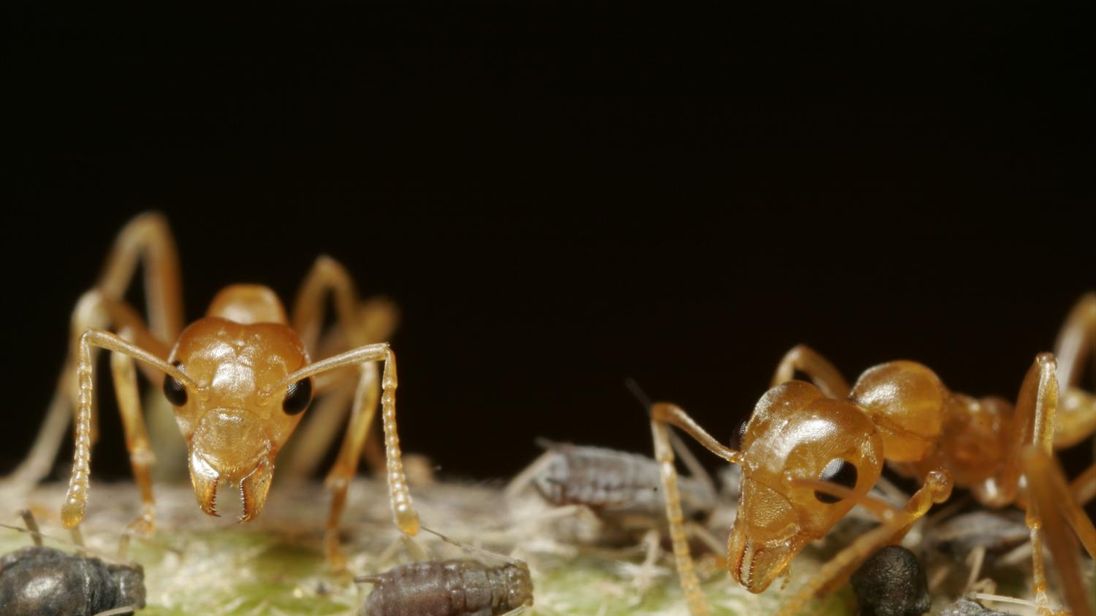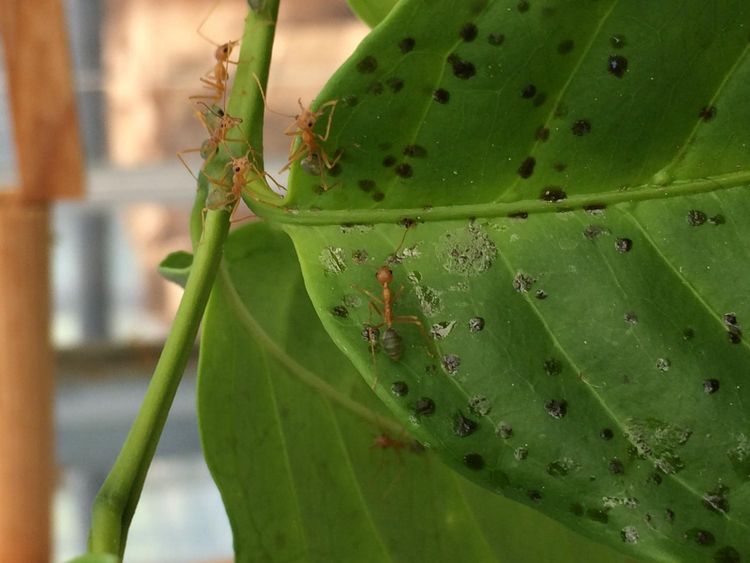Ants give plants 'intravenous' dose of nutrients
Targeted delivery of nutrient-rich waste from the insects provides plant leaves with the essential ingredients for their growth.



Scientists have found out how ants help deliver plants an "intravenous" injection of nutrients.
In a new article, researchers from Aarhus University reveal the symbiotic relationship between plant and insect.
Ants' waste is rich in essential nutrients for plants. When they defecate on plant leaves they are leaving behind valuable fertiliser.
Scientists have known for years that trees and smaller plants attract the ants by secreting a special sugar containing nectar from their leaves.
Ants love eating this sugar and on their journey up the trunks and leaves of trees they'll snack on insects which could be harmful to the plant.
In a laboratory setting the scientists built a miniature coffee plantation with several individual coffee trees.
The central tree held a colony of weaver ants, and the base of each tree was placed in water so the ants couldn't move from tree to tree without a bridge which the scientists controlled.

On the central tree, the ants were fed with a special kind of amino acid containing a heavier nitrogen atom which researchers could track in neighbouring trees to see how ants spread their nutrient-rich waste.
The researchers found that even on the trees which the ants were allowed to visit, but which had some of the leaves wrapped so the ants couldn't leave their waste there, the labelled nitrogen atom could be detected.
"For the first time, we have shown that nutrients from ant waste are taken up by the leaves and transported to other places in the tree," said senior scientist Dr Joachim Offenberg at Aarhus University.
"This has great ecological importance. The ants, which primarily feed on insects in the trees, digest the insects and hand the nutrients on a silver platter to the plants.
"You can almost say that the plants receive the nutrition intravenously exactly where they need it," explained Dr Offenberg.
By;Worldcoinsmoney.blogspot.com
SCIENCE.
Comments
Post a Comment